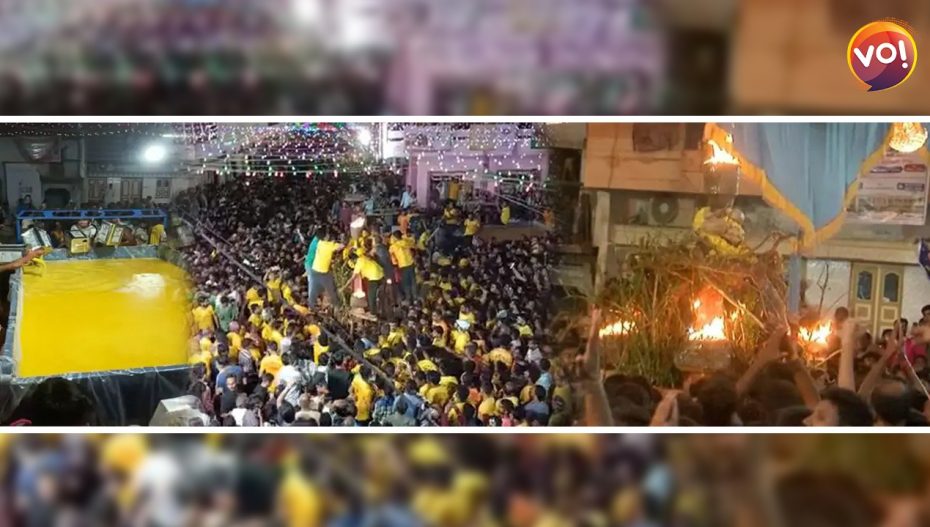The village of Rupal in Gandhinagar is not exactly a land of milk and honey, but at least for one night every year on the final night of Navaratri, it becomes a land of pure ghee. This village of 7,000 people has a unique way of thanking its resident Goddess Vardayani. Tonnes of ghee are offered on the mother’s Palli in Rupal and rivers of that ghee are seen flowing in the village. People come from all over the country and abroad to see this Palli. The festival is also a powerful symbol of social integration.
- What do you mean by Palli?
The question arises in the minds of peoples as to what Palli means. Palli means a chariot without a wooden horse for the mother. The Pandavas were the first to make a golden palanquin. After this, it is mentioned that King Siddharaj of Patan made a Palli from the wood of khijra. At present, eighteen communities such as Brahmins, Banik Patels, Suthars, Weavers, Balands, Pijaras, Chavdas, Malis, Kumbhars, etc. are made together to make Rupal’s Palli. Say that this palli is a symbol of equality of all religions.
The Valmiki brothers of the village cut down a khijra tree for the chariot to make this Palli. Out of them, the brothers of the village prepare mataji’s Pallirath by making it. Later, the Baland brothers bring a string of verandahs and tie the chariot around and decorate it artistically. Then the Palli chariot is taken there to the Palli wala vas, the image of Mataji and the image of the mother is placed there. It is only after the place is sanctified with Gangajal and cow dung and cow urine that the palli is placed.
- Why is ghee offered in the Palli?
The practice of Palli is done by those whose obstacles are over they offer ghee in the Palli. Apart from this, children born are also brought here to have darshan of Palli. The mothers of the children who were born worship Palli. So the women of the village perform garba with a pot (ghaduliyo) on their heads, and the youth of the village work to take the Palli from one place (chowk) to another. The first is to begin with the worship of flames and plants (khijras). Palli goes out to the temple and comes to the square, so ghee is poured on it. It is here that the children are given their heads in the Palli.
Even after the Palli is gone, people from the Valmiki community of the village are seen collecting the ghee offered with a doll, tub. It is said that the ghee offered can only be used by the people of valmiki community of the village. No other community takes ghee prasad. When Palli leaves the village, the people of the village do not anoint. They offer ghee the next day after being placed in the Palli temple on Dussehra.
Mother’s Palli is the chariot of the mother, on which the flame of the symbol of the five Pandavas shines. In this chariot, the mother herself is seated. In Mataji’s Palli, the people of the eighteen alams of the village serve.












